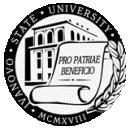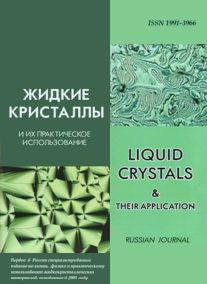|

|
Liquid Crystals and their Application
Russian Journal Zhidkie kristally i ikh prakticheskoe ispol'zovanie Жидкие кристаллы и их практическое использование |

|
|

|

|
|
|
Menu

|
|
|
|
|
Zhidk. krist. ikh prakt. ispol'z. = Liq. Cryst. and their Appl., 2012, 4, 113—122. |

|
|
Cryoformation of Hybrid Metal-Mesogenic Nanosystems
|
Т. I. Shabatina
|
Author affiliations
Lomonosov Moscow State University, Department of Chemistry
Leninskie Gori 1/3, 119991 Moscow, Russia
E-mail: tsh@cryo.chem.msu.su
|
|
Abstract
esogenic nanosystems including plasmon metal particles (silver and copper) as well as long-chain alkylcyanobiphenyls (CB) and alkylcyanophenylpyridines (PPy) have been obtained by low-temperature vacuum co-condensation of reagent vapors on cooled support surfaces. The formation of metastable bi-ligand π-complexes of atoms and small clusters of metal atoms during co-condensation at low temperatures have been shown by FTIR, ESR and UV-Vis spectroscopy combining with the results of quantum chemistry calculations at HF/MP2 and DFT/B3LYP levels. Controlled thermal treatment of co-condensate samples allowed the directed formation of metal nanoparticles of definite size in the range from 2 to 200 nm and their ordrered ansembles. Formation of silver nanoclusters was also caused by UV-irradiation of co-condensate films. It was shown that the type of temperature treatment and molecular self-organisation of different liquid crystalline phases controlle the size, morphology and supramolecular structure of nanoparticles and their aggregates formed in the system. The TEM and AFM data show the formation of ordered structures of nonspheric nanoparticles in nematic mesophases. Growth of flat 2D-aggregates has been found for layered smectic mesophases.
Keywords: hybrid metal-mesogenic nanosystems, metal nanoparticles, low temperature deposition, FTIR, ESR and UV-Vis-spectroscopy
|
|
|
|
|
|




